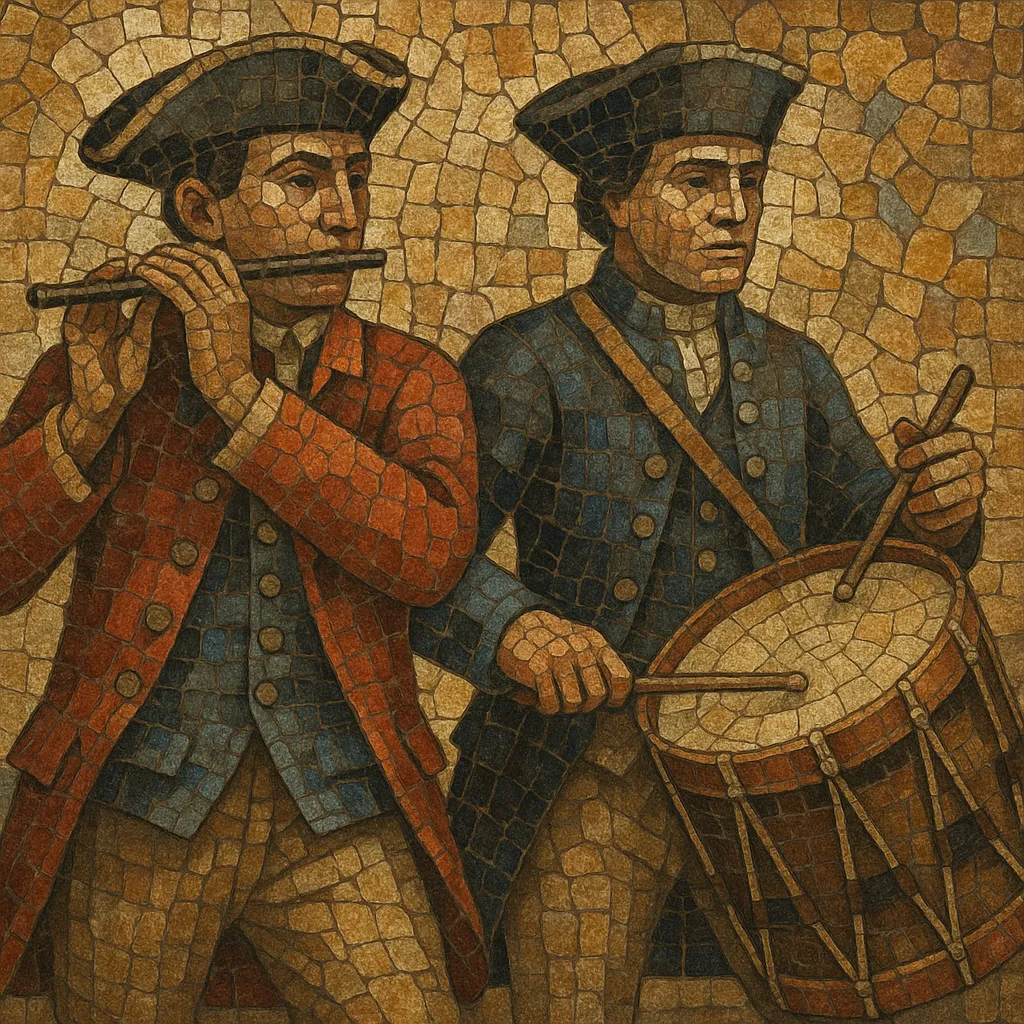
Fife and drum is a historical military and civic music tradition built around the piercing, small wooden fife and a battery of rope-tension side (snare) drums plus a large bass drum. The ensemble plays signal calls, marches, and quicksteps used historically to regulate troops and accompany parades and ceremonies.
Musically, it emphasizes bright, diatonic fife melodies—often in Ionian or Mixolydian modes—supported by open, rudimental drumming (flams, drags, rolls) in a strongly metric, march-oriented feel. Repertoires include camp duty signals and set tunes that trace from Swiss and Germanic fifing into British and Colonial American practice, later becoming a heritage performance idiom in Europe and North America.
Fife and drum practice coalesced in late medieval and early Renaissance Central Europe, particularly among Swiss mercenary companies in the 15th century. The shrill fife could project commands in the open air, while rope‑tension field drums executed codified rudiments to signal daily camp duties, formations, and battlefield maneuvers.
Through the 16th–17th centuries, the tradition spread across German states, France, and Britain. The march as a formal musical type and the growth of military drill standardized the ensemble’s role and repertoire.
British regimental usage brought fifes and drums to North America in the 18th century, where they became embedded in Colonial and Revolutionary War practice. American corps preserved European tunes while adding local repertoire, creating a distinctive "Ancient" style characterized by open, ringing drum rudiments and brisk fife melodies.
As military bands modernized (bugles and later brass), fifes and drums receded from front‑line signaling but remained central to ceremonial functions, civic parades, and veterans’ organizations. In Scotland and the broader British Isles, related corps of drums continued, while Highland regiments formalized pipe bands in parallel.
In the United States, "Ancient" fife and drum corps sustained traditions through community ensembles and historical sites. Standardized rudimental systems (e.g., the American NARD rudiments) preserved the open style distinctive to field drumming.
Today, fife and drum thrives as a heritage and performance genre in Switzerland (notably Basel’s Fasnacht) and North America. Professional and youth corps present historically informed uniforms, drill, and repertories at tattoos, parades, and living‑history programs, maintaining a direct line to one of the earliest organized musical ensembles used for command, control, and morale.

